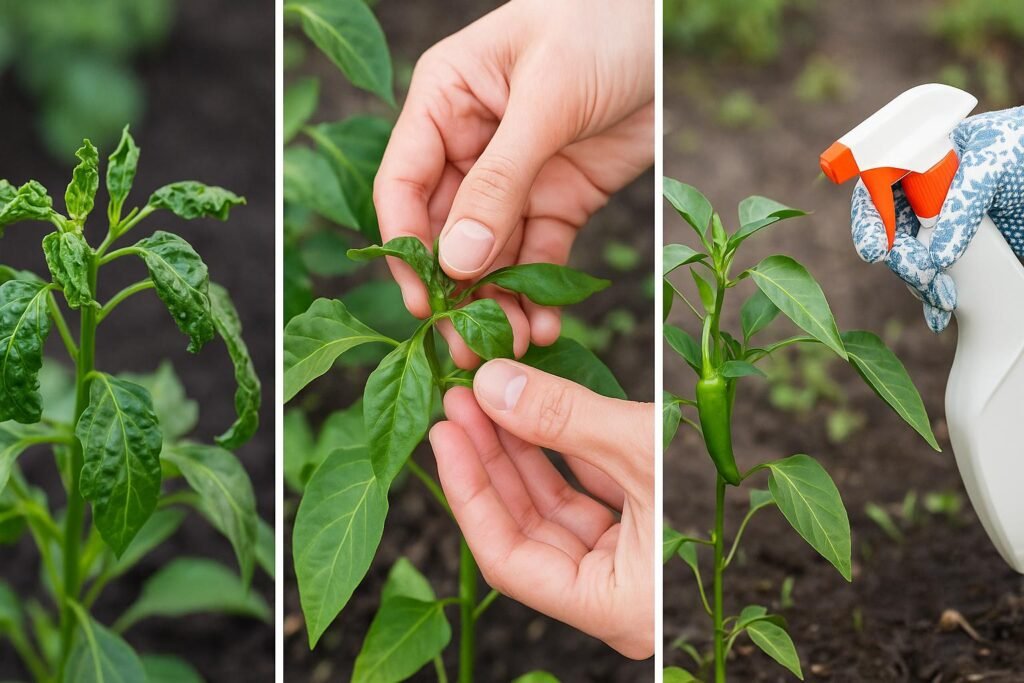Chillies are a vital cash crop in many parts of the world, especially in India, where they serve not just as a kitchen staple but also as a high-demand commodity across local and international markets. From spice powders to pickles, sauces to fresh culinary use, the versatility of chillies has no match. But when it comes to cultivation, one question often stands out: Red or green chillies— which variety offers better yield and profitability?
At a glance, both types seem to follow the same growth cycle. After all, red chillies are often just mature versions of green ones. However, if you scratch beneath the surface, you’ll find a world of differences in harvest timing, market demand, processing potential, storage, and ultimately, revenue. Choosing the right type of plant to grow can dramatically impact your farm’s profitability.
In this blog, we examine the agronomic, economic, and market-based factors that distinguish red and green chillies, enabling farmers and growers to make informed decisions.
The Difference Between Red and Green Chillies
The date of harvest and post-harvest processing are the main factors that differentiate red and green chillies. Red chillies are allowed to grow and dry naturally on the plant, whereas green chillies are taken sooner, often 50–60 days after transplanting. The chilli pods might mature, turn red, become more pungent, and have a longer shelf life because of this postponed harvest.
Although the same plant variety can be used to grow both kinds, certain hybrids are made especially to produce more in either the red or green stage. Thus, selecting the right seeds is crucial in determining the potential of your crop.
For growers starting from scratch or considering a variety switch, it’s essential to Buy Chilli Seeds that are specifically bred for your end goals—whether you’re targeting the fresh market with green chillies or the dry spice market with red chillies.
- Green chillies have higher moisture content and require faster distribution to avoid spoilage.
- Red chillies are often sun-dried or machine-dried, which extends their shelf life and enables storage and export.
These fundamental differences affect not only agronomy but also how farmers plan harvests, labor, post-harvest care, and market entry.
Green Chillies: Quick Returns and Local Market Demand
Green chillies are a great option for farmers that need immediate cash flow or have access to close consumers because they are harvested early and are typically sold fresh in local marketplaces. Green chillies flourish in short supply chains where speed is crucial because of their great perishability.
Key Advantages of Growing Green Chillies:
- Faster harvest cycle means early income recovery.
- Continuous picking can result in multiple harvests from a single planting.
- High demand in local vegetable markets, restaurants, and food services.
Harvesting green chillies frequently—every three to five days—can present both opportunities and challenges in terms of labour. Repeated harvests will yield more profits if labour is easily accessible. However, this frequency might constitute a financial strain in places where labour is costly or irregular.
Furthermore, prices frequently change a lot, particularly during monsoon seasons when supply may decline. Farmers may maximise their profits and profit from a price spike if they plant at the correct moment.
Red Chillies: Shelf-Stable, Export-Friendly, and High-Margin Potential
Red chillies serve a new market, including processors, spice brands, exporters, and long-distance dealers, due to their dried form and increased pungency. These chilies offer greater economic and logistical flexibility because they can be stored for months or even years after ripening and drying.
Key Benefits of Red Chilli Cultivation:
- A longer shelf life enables strategic selling during off-season peaks.
- Suitable for value-added products like powder, flakes, and oils.
- Popular in both domestic and international export markets.
Red chillies require a longer growing period (90–120 days), but because of their strong flavour and low water content, they are frequently more expensive per kilogramme. Because dried chiles are less likely to spoil than fresh ones, farmers also minimise post-harvest losses.
However, drying necessitates the right equipment, such as mechanical dryers or solar drying platforms, which raises the initial cost. However, if you’re aiming for spice processors or wholesale purchasers, the trade-off is advantageous.
“A wise farmer grows not only what the land allows, but what the market demands.”
Yield Comparison: Quantity vs. Value
Depending on variety and care, green chillies can provide up to 100–120 quintals of fresh weight per acre, which is a higher pure yield. After drying, red chillies typically yield 15–25 quintals per acre, as drying drastically reduces weight, often by 70–80%.
The catch is that dried red chiles can cost three to four times as much per quintal as green chillies. Therefore, the value per kilogramme rises significantly even if the volume is smaller.
This puts the profitability comparison into perspective:
- Green Chillies: High volume, low shelf life, immediate income.
- Red Chillies: Low volume (after drying), high market price, delayed income but longer market window.
Choosing between the two depends on your cash flow requirements, local market access, drying facilities, and pricing trends.
Labor and Management Considerations
More proactive field management is required for green chiles. Because they like humid conditions, pests like aphids, mites, and thrips will need to be routinely checked for. Throughout the crop’s life, regular picking also results in higher labour consumption.
Conversely, red chilies require more work at the end of the cycle, especially when it comes to drying and post-harvest sorting. Nonetheless, less daily work is required during the growing season due to the decreased harvest frequency when compared to green chillies.
Some farmers use a hybrid approach to control expenses, collecting early fruits as green and letting the later flush turn red to balance the two markets for the same crop.
For help with pest control strategies specific to chillies, the ICAR Directorate of Plant Protection offers valuable insights and guidelines that align with Indian climatic conditions.
Market Access and Pricing Trends
Location, season, and buyer type can all have a significant impact on market demand. Fresh green chiles are sold at urban marketplaces and do well there. However, this also leaves you vulnerable to spoiling, daily price fluctuations, and delays in transit.
Manufacturers of spices, exporters, and processors purchase large quantities of red chillies. Red chillies are a lucrative commodity that is traded all over the world, with states like Andhra Pradesh, Telangana, and Karnataka leading the way in production and exports.
India exported around 500,000 metric tonnes of dried red chilies in a single fiscal year, according to an APEDA study, demonstrating the strong demand abroad.
Risks and Rewards: Which One to Choose?
There are risks associated with chilies, just like any other crop. Rainfall during harvest might degrade the quality of green chilies. Inadequate drying of red chiles might result in aflatoxin contamination and fungal problems.
That said, risk can be managed with:
- Proper seed selection suited to your region.
- Integrated pest and nutrient management.
- Access to reliable post-harvest infrastructure.
Farmers who invest in planning, timely planting, and market research often find both types rewarding—but in different ways.
FAQs
-
Can I grow both red and green chillies on the same plant?
Yes. Most varieties can be harvested green or left to mature into red. Your goal and timing will determine the stage at which you harvest.
-
Which variety gives faster returns?
Green chillies offer quicker returns due to earlier harvests, ideal for farmers needing immediate cash flow.
-
Are red chillies more profitable?
They can be, especially if you have access to drying infrastructure and are targeting spice companies or export markets.
-
What is the drying ratio of green to red chillies?
On average, 100 kg of fresh chillies yields 20–25 kg of dried red chillies.
-
Can I get multiple harvests with red chilli crops?
Yes. Early flushes can be picked as green, and later flushes allowed to mature and dry. This strategy is common among commercial growers.
Spicy Decisions: A Strategic Take on Chilli Cultivation
There is no one right answer to the topic of whether red or green chillies are better. It’s a calculated choice based on your farming objectives, the state of the local market, your infrastructure, and your financial requirements.
Do you want regular harvests and quick returns? Green chillies could be the way to go. Do you have access to processors or storage after harvest? Higher margins could result with red chillies. Cultivating both varieties from a mixed harvest might occasionally lower risk and diversify revenue.
Understanding your market and adjusting your growth strategies appropriately are crucial. Growing chillies requires more than just soil and seeds; it also requires timing, strategy, and an awareness of what sells.





